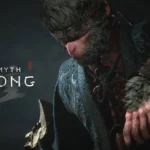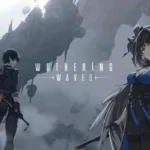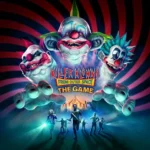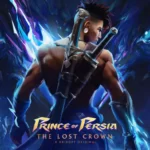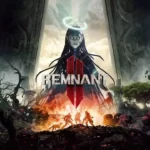At first glance, Gylt triggers a wave of positive anticipation for me when it comes to video games. It strikes the right balance by being scary without diving into hyper-realism, its aesthetics are reminiscent of the intriguing styles seen in works by Tim Burton and Henry Selick, and it boasts a visually stunning atmosphere that checks all the boxes. I did feel a pang of disappointment when Gylt was initially released as a Stadia exclusive, making it seem unlikely that many would get the chance to experience it, myself included. However, my excitement reached new heights when the announcement came that Gylt would be making its way to other platforms. With this news, my expectations were soaring.
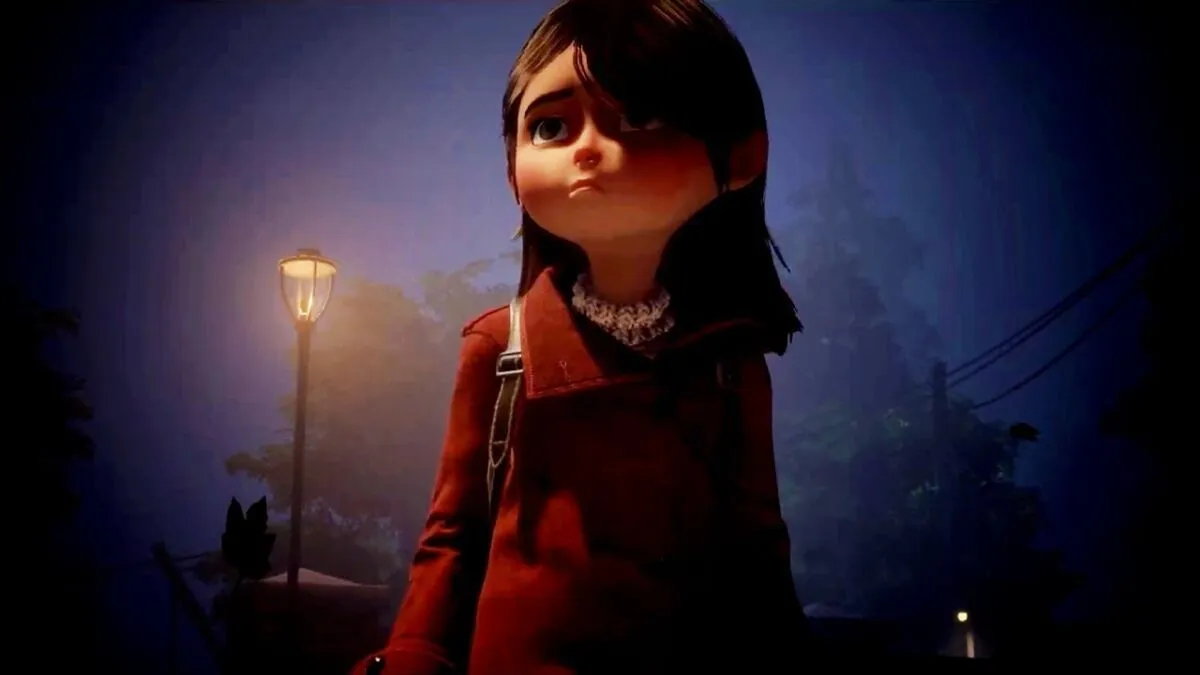
Five hours into the game, Gylt mostly lives up to what I had anticipated. It delivers on its promise of a captivating experience, with the visuals and ambiance leaving me thoroughly impressed. However, there’s a noticeable aspect holding it back from ascending to the ranks of horror greats: the story and theming, while compelling to an extent, seem to lack depth and substance. This limitation prevents Gylt from claiming its place alongside the titans of the horror genre.
While Gylt has certainly struck a chord with me in many aspects, particularly its eerie and captivating world, the lack of a truly engrossing narrative leaves it just shy of achieving the greatness I had hoped for. Nonetheless, it remains a noteworthy title, especially for those who appreciate a blend of chilling atmosphere and creative aesthetics in their gaming experience.
A Captivating Journey through the Eerie Streets of Bethelwood
Step into the quiet embrace of Bethelwood, a tranquil New England town, alongside the intrepid 12-year-old, Sally, set amidst the late 80s backdrop. As she embarks on a seemingly routine quest to locate her younger cousin, Emily, the ordinary takes a twisted turn, plunging Sally into the heart of a living nightmare. Inexplicably, she finds herself transported to a haunting, desolate rendition of her own town, a place where decay and darkness have overtaken the familiar.
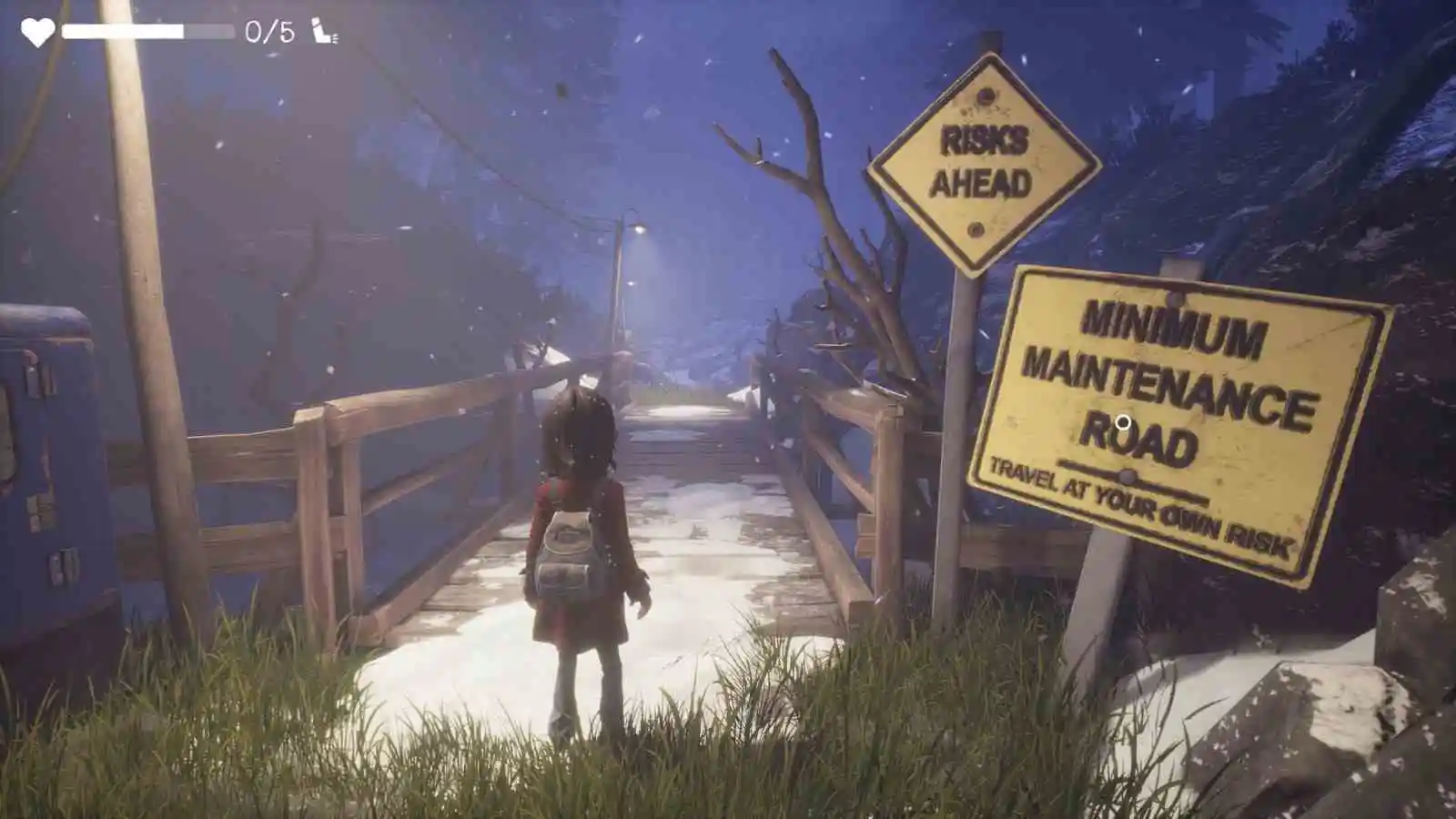
Picture the eerie tableau: dilapidated buildings teetering on the brink of collapse, oil fires casting ominous shadows across the landscape, cars upended on once-bustling sidewalks, and streets devoid of life, save for the menacing presence of monstrous creatures. In this bleak and bizarre dimension, Sally’s mission becomes clear – to rescue her trapped cousin, Emily, and navigate this disquieting alternate reality.
Embracing a linear approach, Gylt crafts a narrative that thrives within its focused structure. Sally’s journey introduces a few upgrades along the way, but at its core, the game elegantly weaves a simple stealth experience. The brilliance lies in the strategic choreography of room-clearing, with the gameplay pivoting more towards thoughtful execution than intricate puzzles.
Early on, the acquisition of a flashlight becomes pivotal, enabling Sally to maneuver stealthily and silently assassinate foes by thrusting the light through their spectral forms. However, the danger isn’t entirely nullified, as Sally must remain vigilant to the threat of roving ravens that could potentially reveal her presence if she’s not mindful of her movements.
In the captivating journey of Gylt, where shadows and strategy converge, Sally’s pursuit of Emily becomes an enthralling adventure, fraught with tension and punctuated by the eerie charm of Bethelwood’s altered reality. As players venture forth, navigating the murky terrain, the game beckons with the allure of uncovering the mysteries that lie beneath the surface, making every step a deliberate, suspenseful dance within this enigmatic world.
Gylt’s Unique Enemy Encounters and Intense Boss Fights
Despite its brevity, Gylt manages to weave a compelling gameplay experience, even though its enemy variety might be perceived as somewhat limited. Clocking in at just five hours, the game’s concise length ensures that this minor concern doesn’t significantly detract from the overall enjoyment. In the absence of in-game enemy names, you and your friend took it upon yourselves to christen them with creative monikers, lending a personalized touch to the haunting foes you encounter.
Allow me to introduce you to this rogues’ gallery: the basic adversaries, affectionately dubbed “Fish Heads” and “Nightmare before Christmas Grunts,” patrol the unsettling areas, attacking with menacing claws if they catch sight of you, but a swift sprint can outmaneuver them. Then come the enigmatic “Ravens,” teleporting through their patrols and unleashing screeching attacks that strike from a distance, adding an extra layer of challenge.
Enter the eerie “Doll Children,” animated, life-sized dolls resembling Sally herself, their haunting voices coaxing you to befriend them. However, if they catch a glimpse of you, they transform into relentless aggressors, with their faces eerily splitting open sideways as they surge forward to consume you, a nightmarish twist on childhood innocence.
In the face of danger, when the element of surprise falters, you have the option to outpace your adversaries, relying on your limited stamina to stay one step ahead. Should a blow land, a trusty inhaler comes to your aid, offering a much-needed healing lifeline. Your arsenal is simple yet effective: a flashlight, powered by finite batteries, and a fire extinguisher armed with pressurized foam capable of freezing enemies in their tracks, providing both a tactical advantage and a sense of empowerment.
The game also introduces a handful of exhilarating boss fights, pitting you against formidable adversaries like “Movie Guy,” “Fire Hulk,” and “Shadow Boy.” Each boss encounter showcases a diverse range of gameplay styles, from entirely stealth-based strategies to full-on, head-to-head combat, with the fire extinguisher as your trusty ally. While not without their challenges, these boss battles weave a sense of accomplishment into the narrative, elevating the overall experience.
ALSO READ: Diablo 4 Guide – The Power of Gem Crafting, Legendary Gear, Sacred Items, and Unique Artifacts
In this short yet eventful journey through the Mysterious world of Gylt, the enemy encounters, though limited, exhibit a distinct charm, reflecting the game’s carefully crafted design. As you and your friend faced these peculiar foes with your imaginative labels, the experience becomes a uniquely personal adventure, peppered with moments of both terror and triumph, echoing the underlying creativity and ingenuity that define Gylt’s captivating essence.
Mixed Puzzles, Navigational Challenges, and a Simpler Story: Unveiling Gylt’s Narrative Elements
Within the intricate tapestry of Gylt, a curious blend of puzzle mechanics and navigational complexity emerges, intertwining with a storyline that, while well-written, presents a theme that may resonate with a younger audience. As you traverse the game’s expansive environments, occasional electrical puzzle mini-games evoke a hint of Bioshock nostalgia, though their challenge might leave more seasoned players wanting for a greater test.

The majority of the puzzles in Gylt lean heavily on environmental manipulation, requiring you to engage in actions like repositioning ladders, freezing electrified water, or using your flashlight to overcome barriers and access essential keys. While these puzzles certainly don’t pose insurmountable challenges, they add a layer of engagement that complements the broader gameplay experience. In fact, you and your friend likely found the true obstacles not in the puzzles themselves but in the potential to get disoriented within the expansive environments.
These environments, despite their impressive design, can prove labyrinthine without the invaluable aid of the map. This navigational complexity, while adding a sense of scale to the game, highlights the importance of the provided map in keeping players on course. Though it’s a testament to the level design’s quality that, with this map, the environments are quite navigable, preventing players from becoming irrevocably lost.
Interestingly, the story aspect of Gylt emerges as the least compelling facet, not because of any inadequacies in the writing itself, but rather due to the simplicity of its themes. While the narrative may serve as a meaningful lesson for a younger audience, focusing on the anti-bullying notion and the responsibility to intervene when witnessing such actions, it may feel somewhat elementary when juxtaposed with the other, more terrifying elements of the game. This thematic contrast creates a unique dynamic, where genuinely eerie moments can coexist with a story that might feel somewhat elementary, leaving a somewhat incongruous impression.
ALSO READ: Disney Illusion Island Review – A Colorful Adventure with Mickey and Friends
The puzzle mechanics, navigation challenges, and narrative elements converge, each contributing a distinct layer to the overall experience. While the puzzles might not push the limits of difficulty, they provide an engaging touch, complementing the game’s broader goals. Navigating the expansive environments, though potentially bewildering without the map, still showcases remarkable design. As for the storyline, it’s well-crafted but leans towards basic themes, creating an intriguing juxtaposition with the eerie atmosphere the rest of the game skillfully constructs.
Exploring Gylt: Artistry Shines, but Themes Fall Short
The artistic prowess of Gylt shines brilliantly through its breathtaking environments, easily ranking among the finest displays from the indie gaming realm. Yet, despite this visual brilliance, some might find a slight deficiency in the execution of environmental theming, particularly when compared to the masterful accomplishments of titles like Little Nightmares.
The world of Gylt successfully conveys a sense of despair and melancholy, but it occasionally takes an excessively heavy-handed approach. Phrases like “YOU DESERVE TO BE BULLIED” and “YOU ARE WORTHLESS,” scrawled in blood on the walls, contribute to a rather over-the-top presentation. Initially, it seemed plausible that this extreme narrative approach might align with the perspective of a young, impressionable girl, offering an explanation for such stark messages. However, this notion was ultimately debunked, leaving these direct statements feeling like a somewhat juvenile attempt at tackling a juvenile theme.
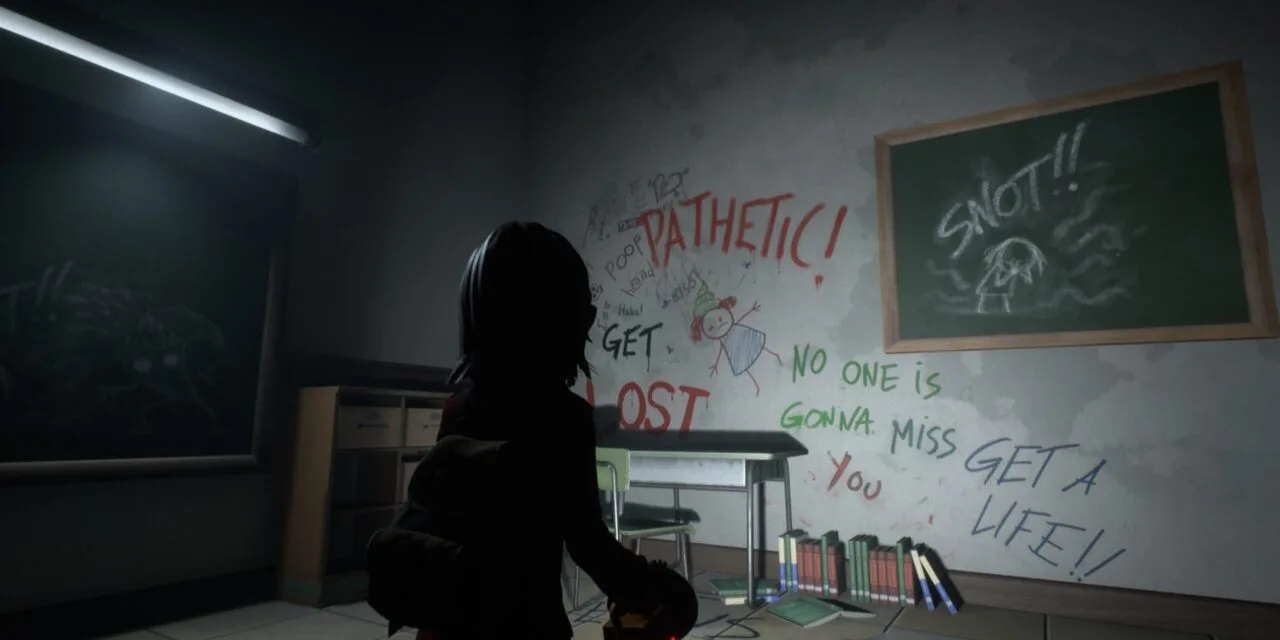
As you traverse this unsettling landscape, red rocks, remnants of a bygone mining era, emerge as poignant artifacts. Stumbling upon roughly a dozen petrified human figures, each accompanied by a hidden journal entry, you can use the red rocks to offer them a symbolic final journey. Through natural exploration, we encountered eight of these poignant encounters, but uncovering a minimum of ten is necessary to unlock the true ending, as the “Bad Endings” serve as stark reminders of the weight of your choices.
ALSO READ: Arcadian Atlas Review – A Captivating SRPG Adventure with Love, War, and Unique Combat Systems
The culmination of your endeavors ultimately hinges on the elusive “Good Ending,” the sole narrative resolution that offers a truly satisfying conclusion. Should you wish to avoid the feeling of time wasted, diligently seeking out these rock-bound companions becomes essential, leading you down a path that illuminates the profound impact your actions can have on the unfolding story.
The artistic splendor of its environments captivates, though the execution of environmental theming might fall slightly short of the thematic mastery found in certain peer titles. The journey through this world, while at times unsettling, presents an opportunity to offer solace to the petrified souls you encounter, underscoring the importance of each discovery and revealing the paths that diverge into a triumphant or somber conclusion. As you traverse this enigmatic realm, the true satisfaction lies not just in the visual beauty but in the narrative resolutions you unearth along the way.
Verdict
Gylt emerges as a multifaceted gem, capturing moments reminiscent of gaming masterpieces like Little Nightmares and INSIDE at its peak. This haunting adventure successfully weaves together a series of compelling elements that, while not individually groundbreaking, coalesce to create an engrossing experience that captivates from start to finish.
The musical composition within Gylt stands as a prime example, simultaneously gripping and haunting, lending an evocative layer to the already intense atmosphere. The meticulously crafted 3D environments paint a dreadfully beautiful backdrop, evoking a sense of eerie wonder with every step. The presence of the few monstrous denizens that inhabit this world adds an extra layer of intrigue, as they either hold a fascinating allure or strike sheer terror into your heart.
Stealth gameplay within Gylt offers an enjoyable diversion, offering a taste of strategic engagement, though some tweaks to the enemy AI detection could enhance the experience further. The environmental puzzles strike a balance, proving challenging enough to be engaging yet not frustratingly difficult, creating an entertaining interplay that keeps players engaged.
While it might not boast one singular aspect that outshines other games, Gylt excels across a spectrum of elements, with the notable exception of the story and theme exploration, which fall a bit short. Yet, the culmination of its strengths creates an unforgettable experience, especially when shared alongside a good friend, creating a dynamic that mitigates the scarier moments and transforms the gameplay into a wonderfully shared adventure.
FAQs
What is the setting and premise of Gylt?
Gylt takes place in the late 80s in a New England town called Bethelwood. The story follows a 12-year-old girl named Sally, who ventures into a nightmarish version of her hometown to rescue her cousin Emily.
What type of gameplay can I expect in Gylt?
Gylt offers fairly linear gameplay with elements of stealth. The primary goal is to clear rooms of enemies, and you’ll use upgrades like a flashlight and a fire extinguisher that shoots pressurized foam. The game also includes some boss fights and environmental puzzles.
How is the enemy variety in Gylt?
While the enemy variety is somewhat limited, the game’s short duration (around five hours) compensates for this. You’ll encounter basic enemies referred to as “Fish Heads” or “Nightmare before Christmas Grunts,” teleporting ravens, and menacing “Doll Children.”
Can you tell me about the storytelling in Gylt?
Gylt’s storytelling, while not poorly written, centers around basic themes. The primary focus is on the idea that bullying is bad, with a moral message about taking action against it. Some find the story somewhat lacking in the context of a horror game.
How are the graphics and atmosphere in Gylt?
The game excels in this aspect. Gylt features beautiful 3D environments with a controlled and haunting atmosphere. The visuals capture a sense of despair and sadness, but some players feel that the thematic elements could have been more nuanced.
What is the significance of the red rocks in the game?
You’ll come across red rocks that seem to be from an old mine in the town. These rocks play a part in the narrative, as you can use them to send petrified humans to their final resting place. Finding a certain number of these rocks affects the ending you’ll get.
How’s the PC port of Gylt?
Gylt’s PC port is well-optimized. It offers smooth gameplay, both with controllers and mouse and keyboard (MKB) controls. The game provides numerous graphical settings for customization, and players with solid PC configurations report excellent performance.
Would you recommend Gylt?
Yes, if you enjoy games with gripping atmosphere, well-designed environments, and elements of stealth and puzzle-solving, Gylt is worth playing. While it may not excel in any one area, it does many things very well.
What are the system requirements for Gylt?
System Requirements are given below:
OS: Windows 10 64-bit
Processor: i5-3570K / AMD Ryzen 5 2500X
Memory: 8 GB RAM
Graphics: AMD Radeon R9 Fury Series / GTX 1060

